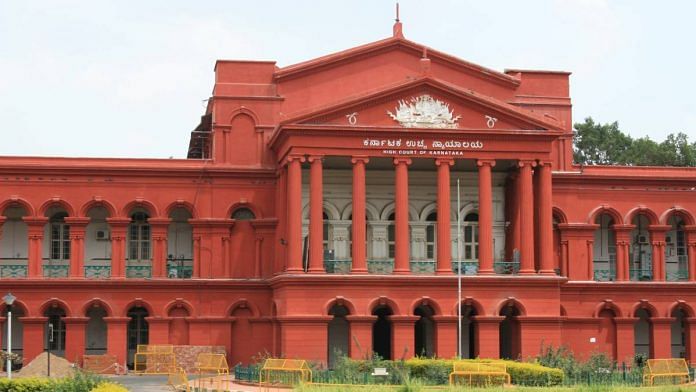New Delhi: The arguments challenging the hijab ban on students in Karnataka continued Tuesday, with the petitioners asserting that the College Development Committee (CDC), which issued the prohibition on the headscarf, is a non-existent body under the State Education Act and is not authorised to regulate uniforms of pre-university (PU) government college students.
Senior advocate Ravi Varma Kumar made the submissions before a three-judge special bench constituted to hear the batch of petitions against the ban. The petitioners want the court to invalidate the order issued by Udupi’s PU government college as well as the 5 February state government order that essentially supports the prohibition on wearing a hijab.
Kumar took the support of the state education law to emphasise that the CDC is an extra-legal authority and is endowed with the power to prescribe the uniform, contrary to the scheme of the Act and the letter of the rules.
“The CDC is not an authority defined under the Act,” Kumar said, adding that according to section 2(17) of the Education Act, a PU government college can have a governing council, but not a CDC.
Kumar then told the court that currently, the state has not drafted any code of conduct to prescribe uniform for students studying in PU government colleges. In the absence of such a prescription, the CDC could not have issued prohibitory instructions on wearing a hijab.
“Kindly mark that the government is yet to take a decision on the uniform dress code. It is to constitute a high-level committee. As of now, government has not prescribed any uniform or prohibited the wearing of hijab,” Kumar told the bench.
Even in the government order, there is no prohibition on wearing a hijab, he contended. “Kindly note there is no ban of wearing hijab by any student, much less by religious minority community. Government order says CDC will prescribe it. Till then, government order says, clothes which do not threaten public order, equality or unity must be worn,” he argued.
Hijab does not violate public order, equality or unity, he insisted. Kumar will conclude his arguments Wednesday since the bench called it a day after hearing the arguments for more than two hours.
The court, however, did not yield to requests made by a few petitioners to suspend or clarify its 10 February interim order that disallows students to wear any religious clothing to colleges. According to one of the counsel for one of the petitioners, colleges across the state are misinterpreting the directions that were meant only for those institutions where uniforms are prescribed. The bench asked the lawyer to file an appropriate application seeking a clarification.
Also read: Reform on hijab important but where it’s coming from is more important
Hijab a ‘practice of faith’
Senior advocate Devadatt Kamat, who completed his arguments Tuesday, urged the court to modify its order to allow Muslim girls to wear hijab. He said the sweep of the order is “extremely broad” and is in teeth of Article 25 (which protects a citizen’s right to practice one’s faith and religion) and the court should make some leeway since the consideration (of the matter) will take some time.
In his arguments, Kamat said India cannot be compared with Turkey where wearing a hijab has been banned in public because the secularism practiced here was different from that country. Hijab wearing is permissible under Article 25 and this can be restricted only on the ground of public order, morality or health.
“This (hijab) is not a display of religious identity. It is a practice of faith. To counter that, if someone wears a shawl, then one has to show that is not display of religious identity alone, but something more,” he said.
Kamat drew parallels with a case argued in the South African Supreme Court, which permitted the petitioner, a south Indian girl, to wear a nose-ring and stated: “The display of religion and culture in public is not a ‘parade of horribles’ but a pageant of diversity which will enrich our schools and in turn our country.”
(Edited by Neha Mahajan)
Also read: The right answer to the wrong hijab question is still a wrong answer



